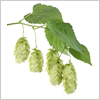Coșul tău
 USA: Hops market looking down due to surplus on the market and lowered demand
USA: Hops market looking down due to surplus on the market and lowered demand
Due to a surplus of hops and lowered demand, a once-strong local market for the crop is looking down, KIMA reported on July 9.
"This craft market, the strong craft market that we've enjoyed here was really a ten-year bull market," said Pete Mahony, Vice President of the supply chain at John I Haas. "Tremendous growth in the craft beer styles in particular, IPAs, hazy IPAs and so forth. Lot of new breweries came online, we now have about ten thousand breweries in the US, at the start of craft we had a fraction of that."
At the start of the strong period, there were around 30,000 acres of hops grown in the us. Hops acreage grew nearly double when it peaked at around 61,000 acres in 2021.
"Beer demand was still growing, but at a slower rate," Mahony said. "Now what we're seeing is it's not even growing, in fact it's declining by two to three percent annually."
This year, farms are producing 44,000 acres of the crop.
"Half of the acreage that we had gained as a result of craft, we've now taken out," said Mahony
One of the reasons for this shift is because there are more beverage options for consumers on the market.
"Consumers have other options out there, we're always seeing pressure from other alternative beverages, like seltzers were a big threat for a while," said Mahony "Now we're seeing other beverages, we call them RTDs, ready to drink cocktails is a new threat for our industry."
Mahoney says that people are also looking for healthier alternatives, whether it's not drinking alcohol, or finding a healthier beer.
"We are seeing a little bit of a trend towards lighter beer styles again, not saying that consumers are moving away from IPAs, but we're seeing a pickup in demand for lager-type beers, or pilsners, and even non-alcoholic beers, which still have hops," Mahony said.
With hops prices plummeting and acres of hops diminishing, Mahony remains hopeful that the downfall won't last forever.
"We do think that it will level off, we just need to see some demand starting to return, and signs that we are getting out from underneath this large excess oversupply of hops," Mahony said. "It still may take a couple of years yet."
According to Mahony 98 percent of the nation's hops are grown in the northwest. Of those acres 70 percent are grown in the Yakima Valley.
Înapoi





